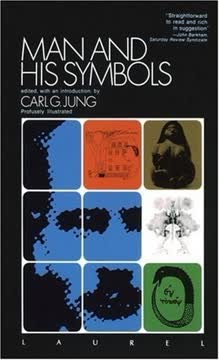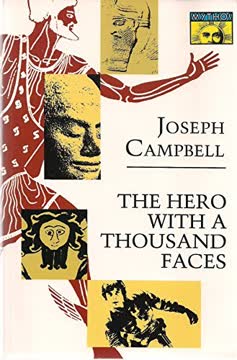重点摘要
1. 自我与自性关系驱动心理发展
自我与自性的关系如同被动者与主动者的关系……自性……是一个先验存在,自我从中演化出来。可以说,自性是自我的无意识预示。
自我与自性的定义。 自我是意识的中心,而自性是整个心灵的中心和整体,包括意识和无意识。自性包含并组织整个个性,包括自我。
发展阶段。 心理成长涉及一个循环过程:
- 原始的无意识整体(自我-自性认同)
- 自我与自性的分离和区分
- 自我与自性的有意识重聚
随着意识的扩展,这个循环在一生中不断重复。健康的“自我-自性轴”——自我与自性之间的重要连接——对于心理稳定和成长至关重要。
2. 膨胀和疏离是个体化过程中必要的阶段
所有进步之前都有一个膨胀状态,因为通过它,意识心灵意识到其天上的起源。
膨胀的定义。 膨胀发生在自我认同于自性时,赋予自己神一般的属性。这导致自大、不切实际的野心和缺乏适当的谦逊。
随之而来的疏离。 膨胀状态不可避免地被现实刺破,导致疏离——一种与自身意义和价值的痛苦分离。这引发了一场危机,可能导致更高的意识。
循环过程。 心理发展涉及反复的循环:
- 膨胀(与自性认同)
- 疏离(与自性分离)
- 与自性的有意识关系
每个循环整合更多的无意识,扩展意识。
3. 与自性的相遇转变意识
当生命的顶峰到达,当花蕾展开,从较小的事物中出现较大的事物时,正如尼采所说,“一变为二”,那个一直存在但一直不可见的更大形象,以启示的力量出现在较小的个性面前。
神秘体验。 与自性的有意识相遇通常由疏离或存在危机状态所预示。它以一种深刻的、变革性的意义和目的的启示形式出现。
自我的转变。 自我在相遇中既被击败又被解放。它必须放弃其假定的自主性,但获得了与更深层次的能量和意义的连接。
持续的关系。 在初次相遇之后,任务变成建立自我与自性之间的持续有意识关系。这包括:
- 区分自我与自性
- 维持重要的自我-自性连接
- 将无意识内容整合到意识中
4. 象征和梦揭示无意识心灵
象征是一种具有多重意义的不确定表达,指向某些不易定义且因此无法完全了解的事物。
象征的功能。 象征桥接意识和无意识,传达理性心灵无法完全掌握的意义。它们释放并转化心理能量。
梦的解释。 梦提供了一个直接窥视无意识的窗口。解释的关键原则:
- 考虑个人联想
- 用文化/神话的平行物放大
- 寻找对意识态度的补偿
- 与当前生活情况相关联
常见象征。 重要的象征包括:
- 曼荼罗(整体,自性)
- 英雄之旅(个体化过程)
- 神圣的孩子(新潜力)
- 智者(内在智慧)
- 阴影人物(被压抑的自我方面)
5. 基督体现了个体化的自我
我们新教徒迟早必须面对这个问题:我们是否应理解“效仿基督”是指我们应该模仿他的生活,如果我可以这样说,模仿他的圣痕;还是在更深层次上,我们应该像他那样真实地生活我们自己的独特生活?
基督作为自性象征。 基督形象既代表自性,也代表理想的个体化自我。关键方面包括:
- 人类与神性的统一
- 自我欲望的牺牲
- 死亡与重生
伦理教义。 基督的教义,从心理学角度解释,为个体化提供指导:
- 接受阴影(“让没有罪的人……”)
- 超越自我中心(“爱你的邻居……”)
- 与超个人关系(“我们的父……”)
个人使命。 真正的效仿基督意味着找到并实现自己独特的生命路径和潜力,而不是字面上的模仿。
6. 个体性具有超越的起源和目的
心理个体,或个体性,具有先验的无意识存在,但只有在其独特性质的意识存在时才具有意识存在。
超越的身份。 每个人的个体性起源于集体无意识,象征着一个人的“名字写在天上”。
独特性与普遍性。 个体化的目标是实现一个人的独特自我,同时也认识到与集体人类经验的联系。
意义和目的。 发现并实现一个人的个体性提供了一种超越自我满足的意义和目的感。这包括:
- 与集体规范区分开来
- 整合心理的无意识方面
- 有意识地与自性相关联
7. 基督的血象征心理转变
正如哲学石,化学之王,通过其染色剂和其发展的完美具有将其他不完美和低贱金属转变为纯金的能力,我们的天国之王和根本基石,耶稣基督,唯有他能用他的祝福红宝石色染色剂,即他的血,净化我们这些罪人和不完美的人。
转变的本质。 基督的血代表自性的转变能量,赎回并提升意识。
炼金术的平行。 炼金术的意象为心理转变提供了丰富的象征:
- 将铅变为金(转变阴影)
- 提取精华(实现自性)
- 合一(结合对立面)
心理效应。 接触这种转变的“血”带来:
- 解除无意识的罪恶感
- 连接到超个人意义
- 内在冲突的和解
8. 哲学石代表个体化的目标
哲学石具有将任何不完美的地球物质转变为其*高完美度的能力。
终极整体。 哲学石象征着完全实现的自性——意识和无意识的整合,导致心理的整体和创造潜力。
转变的力量。 石头的关键属性与个体化的心灵平行:
- 将低贱金属转变为金(提升意识)
- 治愈所有疾病(解决神经症)
- 赋予永生(连接到永恒的自性)
- 赐予普遍智慧(访问集体无意识)
持续的过程。 虽然自性的完全实现仍然是一个理想,个体化过程在一生中不断努力实现更大的整体和整合。
最后更新日期:
FAQ
What's Ego and Archetype about?
- Focus on individuation: The book explores the journey to psychological wholeness, known as individuation, which is central to analytical psychology.
- Ego and Self relationship: It discusses the dynamic between the ego and the archetypal Self, emphasizing how this relationship shapes an individual's worldview and sense of purpose.
- Symbolism in life: Edinger connects individuation to encounters with symbolism in religion, myth, dreams, and art, suggesting that these experiences are vital for personal growth.
Why should I read Ego and Archetype?
- Understanding psychological development: The book provides insights into the stages of psychological development and the importance of integrating the unconscious into conscious life.
- Connection to spirituality: It offers a unique perspective on how the journey of individuation parallels spiritual quests, making it relevant for those interested in psychology and spirituality.
- Rich in symbolism: Readers will appreciate the exploration of symbols and archetypes, which can deepen their understanding of personal and collective experiences.
What are the key takeaways of Ego and Archetype?
- Individuation is essential: The process of individuation is crucial for achieving psychological wholeness and understanding one's true self.
- Ego-Self axis: The book emphasizes the importance of the ego-Self axis, which serves as a vital connection between the conscious and unconscious aspects of the psyche.
- Role of symbols: Symbols play a significant role in personal development, acting as bridges to deeper understanding and integration of the psyche.
How does Edward F. Edinger define individuation in Ego and Archetype?
- Journey to wholeness: Individuation is described as the process through which an individual becomes aware of and integrates the various aspects of their psyche.
- Encounter with the Self: It involves recognizing the Self as the central archetype that guides personal development and self-realization.
- Cyclical process: Edinger presents individuation as a cyclical journey, marked by alternating states of inflation and alienation throughout life.
What is the ego-Self axis in Ego and Archetype?
- Connection between ego and Self: The ego-Self axis represents the relationship between the conscious ego and the archetypal Self, essential for maintaining psychological integrity.
- Impact on development: Damage to this axis can lead to alienation and a sense of meaninglessness, highlighting its importance in psychological health.
- Facilitates individuation: A well-functioning ego-Self axis allows for a dialogue between the ego and the Self, promoting growth and self-awareness.
What role do symbols play in Ego and Archetype?
- Symbols as carriers of meaning: Symbols are seen as living entities that convey deep psychological meaning and connect individuals to their unconscious.
- Facilitating personal growth: They help individuals navigate their inner worlds, providing insights that can lead to healing and transformation.
- Connection to archetypes: Symbols are manifestations of archetypes, representing universal patterns of human experience that can guide personal development.
How does Ego and Archetype relate to alchemy?
- Alchemy as a metaphor: Edinger uses alchemical symbolism to illustrate the psychological processes of transformation and individuation.
- Philosophers' Stone as Self: The Philosophers' Stone represents the ultimate goal of both alchemy and individuation, symbolizing the integration of the psyche and the realization of the Self.
- Transformation processes: The alchemical processes of solutio and coagulatio are mirrored in the psychological processes of dissolution and integration.
How does Edward F. Edinger relate Christ to the individuation process in Ego and Archetype?
- Christ as a symbol: Edinger presents Christ as a powerful symbol of the Self, embodying the journey of individuation and the integration of opposites.
- Dual nature of Christ: The paradox of Christ being both God and man reflects the complexity of the individuation process, where the ego must reconcile its identity with the greater Self.
- Model for personal growth: Christ's teachings and experiences serve as a guide for individuals seeking to navigate their own paths toward wholeness.
What is the significance of the Book of Job in Ego and Archetype?
- Symbol of individuation: The Book of Job is analyzed as a narrative that illustrates the process of individuation and the encounter with the Self.
- Experience of suffering: Job's trials represent the necessary suffering that leads to greater self-awareness and understanding of the divine.
- Transformation through adversity: The story emphasizes that through hardship and alienation, one can achieve a deeper connection with the archetypal psyche.
How does Ego and Archetype address the concept of duality?
- Union of opposites: The book emphasizes the importance of reconciling dualities within the psyche, such as the ego and the Self, masculine and feminine, and light and dark.
- Symbolic representations: Edinger uses various symbols to illustrate the dynamic interplay between opposites, suggesting that these dualities can lead to growth and transformation.
- Psychological implications: Understanding and integrating dualities can help individuals navigate their inner conflicts and achieve a greater sense of self-awareness.
What are the best quotes from Ego and Archetype and what do they mean?
- “The ego stands to the Self as the moved to the mover”: This quote highlights the dynamic relationship between the conscious ego and the archetypal Self, emphasizing the Self's role as the guiding force in personal development.
- “Man’s extremity is God’s opportunity”: This suggests that moments of crisis and despair can lead to profound spiritual awakening and connection with the Self.
- “The original state of affairs–experiencing oneself as the center of the universe–can persist long past childhood”: This reflects the idea that many adults still grapple with inflated self-perceptions, which can hinder their growth and individuation.
How does Ego and Archetype address the concept of alienation?
- Alienation as a necessary phase: Edinger discusses alienation as a crucial part of the individuation process, where the ego must separate from the Self to grow.
- Consequences of alienation: The book explores how alienation can lead to feelings of despair and meaninglessness, emphasizing the importance of reconnecting with the Self.
- Path to healing: Through understanding and integrating the experience of alienation, individuals can find their way back to a more meaningful existence and a stronger connection to their inner selves.
评论
《自我与原型》由爱德华·F·埃丁格撰写,探讨了荣格的个体化、自我与自性关系以及原型象征的概念。读者称赞其对心理和精神发展的见解,特别是对基督教神话的分析。该书内容丰富且具有挑战性,需要具备荣格和心理学的背景知识。虽然有些人认为它深刻且改变人生,但也有人批评其父权视角和对基督教象征的依赖。第一部分备受推崇,但后面的章节被认为不太容易理解。总体而言,这是一部引人深思的作品,适合对深度心理学和宗教象征感兴趣的人士。
Similar Books












